Introduction
America, often described as a “melting pot” of cultures, stands as a testament to the power of diversity and tolerance. The United States has been shaped by waves of immigrants from every corner of the globe, each bringing their unique customs, traditions, and perspectives. In this article, we explore the rich tapestry of American culture, underpinned by tolerance and diversity, and how it has enriched the nation in countless ways.
“America, often described as a “melting pot” of cultures, stands as a testament to the power of diversity and tolerance. The United States has been shaped by waves of immigrants from every corner of the globe, each bringing their unique customs, traditions, and perspectives. In this article, we explore the rich tapestry of American culture, underpinned by tolerance and diversity, and how it has enriched the nation in countless ways.
One of the remarkable aspects of American society is the way in which it has transformed diversity into a source of strength. The concept of the “melting pot” suggests that as individuals from different backgrounds come together, their cultures blend into a harmonious whole. However, it’s important to recognize that this process is not about erasing one’s cultural identity but rather about celebrating and sharing it. It’s like a grand potluck dinner where each guest brings a unique dish to the table, contributing to a feast that is greater than the sum of its parts.
The American experience is a mosaic of countless stories and journeys. From the Irish immigrants fleeing the Great Famine in the 1840s to the Vietnamese refugees seeking sanctuary after the Vietnam War, each group has added a chapter to the ongoing narrative of America. This influx of diverse cultures has not only broadened the nation’s culinary landscape, with dishes like pizza, sushi, and tacos becoming as American as apple pie, but it has also fostered a rich cultural exchange that has permeated every aspect of society.
Diversity and tolerance have fueled innovation in America. The collision of different worldviews and perspectives has led to groundbreaking discoveries in science, technology, and the arts. Albert Einstein, a German immigrant, revolutionized physics with his theory of relativity. Sergei Brin, co-founder of Google, was born in Russia. Lin-Manuel Miranda, of Puerto Rican descent, reshaped musical theater with “Hamilton.” These are just a few examples of how individuals from diverse backgrounds have contributed to the country’s intellectual and creative vitality.
Moreover, American culture has benefited greatly from the arts and traditions introduced by immigrants. Jazz, born in African American communities, has become a quintessential American music genre. Chinese New Year parades grace the streets of many cities, celebrating a tradition brought over by Chinese immigrants. The colorful Diwali celebrations, originally from India, light up neighborhoods across the nation. These cultural expressions not only add vibrancy to American life but also foster cross-cultural understanding and appreciation.
In a world that sometimes seems increasingly divided, America’s commitment to tolerance and diversity is a beacon of hope. It demonstrates that when people of different backgrounds come together with respect and openness, they can build a stronger and more vibrant society. While challenges related to diversity and tolerance persist, including discrimination and prejudice, the overarching narrative of the United States remains one of progress and inclusivity.
As we continue to navigate the complexities of our globalized world, the American “melting pot” serves as a model for how diversity can be a source of strength, unity, and resilience. By embracing the richness of its cultural tapestry and nurturing the values of tolerance and inclusion, America not only enriches itself but also sets an example for the world to follow. In the grand mosaic of humanity, America’s unique blend of cultures and ideas stands as a testament to the enduring power of diversity and the boundless possibilities it offers.”
For a comprehensive look at this subject, we invite you to read more on this dedicated page: Planning for diversity: education in multi-ethnic and multicultural …
Diversity is the lifeblood of America, fueling innovation, creativity, and resilience. It is a reflection of the nation’s historical commitment to providing a safe haven for those seeking a better life and a place where the pursuit of happiness is not bound by ethnicity, religion, or background. The multifaceted mosaic of American culture is a remarkable blend of traditions and values from around the world.
Diversity lies at the very core of America’s identity and continues to shape the nation in profound ways. Beyond being a mere demographic fact, diversity is the lifeblood of America, infusing it with innovation, creativity, and resilience. Here, we delve deeper into the significance of diversity in the American story:
A Tradition of Inclusivity: America’s historical commitment to providing a safe haven for those seeking a better life is a cornerstone of its identity. From the earliest waves of immigration to the present day, people from all corners of the globe have come to America in pursuit of the American Dream. This inclusivity, grounded in the belief that opportunity should be accessible to all, is a driving force behind the nation’s remarkable diversity.
A Creative Cauldron: Diversity is not just a demographic statistic; it’s a wellspring of creativity and innovation. When people from different cultural backgrounds, with varied perspectives and experiences, come together, they bring a wealth of ideas, approaches, and talents. This cultural exchange is the engine of innovation, propelling American society forward in fields ranging from science and technology to the arts.
Resilience in Unity: America’s diversity is a testament to its resilience. In times of challenge and adversity, the nation’s ability to draw upon the strengths of its diverse population has proven to be a well of resilience. Diversity fosters adaptability, as individuals and communities bring their unique problem-solving skills to the table, enabling America to overcome obstacles and emerge stronger.
A Tapestry of Traditions: The multifaceted mosaic of American culture is a remarkable blend of traditions, values, and customs from around the world. From cuisine and language to art and music, this rich tapestry reflects the interconnectedness of humanity. It underscores the idea that, at its heart, America is a nation of immigrants, each contributing threads to this cultural tapestry.
A Model for the World: America’s celebration of diversity stands as a model for the world. It demonstrates that a nation can thrive and prosper when it embraces the collective contributions of individuals from diverse backgrounds. America’s commitment to the principle that one’s ethnicity, religion, or background should not be a barrier to success serves as a beacon of hope and inspiration to people worldwide.
Challenges and Progress: While America’s diversity is a source of strength, it is not without its challenges. Issues related to inclusion, discrimination, and social justice persist. However, these challenges are met with a resolute commitment to progress and equality. The ongoing dialogue and activism to address these issues demonstrate America’s dedication to becoming a more perfect union.
In conclusion, diversity is not just a demographic feature of America; it is its heartbeat. It fuels the nation’s innovation, creativity, and resilience. America’s historical commitment to inclusivity, the blending of traditions from around the world, and the celebration of its diverse population make it a shining example of what can be achieved when diversity is embraced and cherished. This diversity, woven into the fabric of the nation, is a testament to the enduring promise of America—a promise where the pursuit of happiness knows no bounds and where the tapestry of humanity continues to be woven with threads of hope and opportunity.
To delve further into this matter, we encourage you to check out the additional resources provided here: Urbanization and Its Impact on Social Dynamics (docx) – Course …
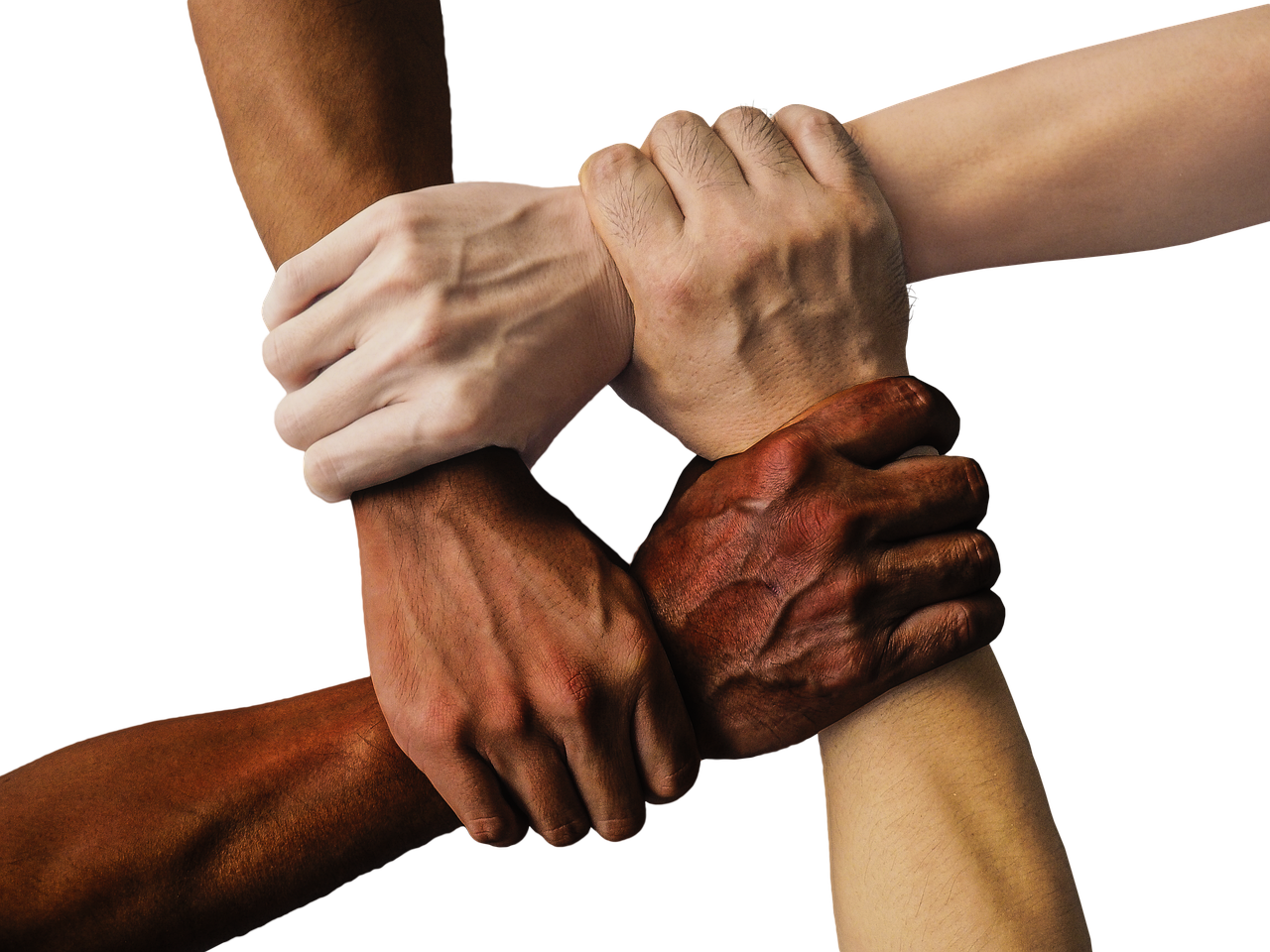
The United States has long been a hub of cultural exchange. From the early waves of European immigrants to the more recent influx of individuals from Asia, Africa, and Latin America, every group has contributed to the nation’s cultural wealth. This exchange has given rise to unique fusions of food, art, music, and language, creating a dynamic cultural landscape.
The United States has a rich history of cultural exchange, with each wave of immigrants adding to the nation’s tapestry of diversity. From the early settlers from Europe who established the foundations of American culture to the more recent arrivals from Asia, Africa, and Latin America, every group has left an indelible mark on the country’s cultural landscape. This ongoing exchange of ideas, traditions, and identities has given rise to a dynamic and vibrant cultural scene that continues to evolve.
Food Fusion: One of the most tangible expressions of cultural exchange is the culinary fusion that has taken place. The United States boasts a smorgasbord of cuisine, with dishes that reflect the diverse backgrounds of its inhabitants. From Italian-inspired pizza to Mexican tacos, Chinese stir-fry to Ethiopian injera, American cuisine is a testament to the blending of flavors and traditions. Food festivals and multicultural dining experiences offer opportunities for people to savor the world without leaving their own neighborhoods.
Artistic Melting Pot: The arts have thrived in this environment of cultural exchange. American literature, music, dance, and visual arts draw inspiration from a myriad of sources. Jazz, for example, is a quintessentially American genre that emerged from the fusion of African rhythms, European harmonies, and Latin influences. Similarly, contemporary visual artists often explore themes of identity and cultural heritage, resulting in a diverse range of artistic expressions that challenge and enrich the cultural discourse.
Language and Communication: The United States is a linguistically diverse nation, with numerous languages spoken by its residents. English, while widely spoken, is flavored by accents and idiomatic expressions from around the world. Spanish, Chinese, Arabic, and many other languages are spoken in homes and communities, contributing to the country’s linguistic mosaic. This linguistic diversity reflects the interconnectedness of cultures and provides opportunities for cultural exchange through language.
Festivals and Celebrations: Throughout the year, communities across the United States come alive with festivals and celebrations that showcase their cultural heritage. From Chinese New Year parades in San Francisco to Diwali celebrations in New York, from Juneteenth commemorations to Native American powwows, these events not only preserve traditions but also invite others to participate in the festivities and learn about different cultures.
Integration and Identity: Cultural exchange has also influenced individual and collective identities. Many Americans proudly embrace hyphenated identities, such as Mexican-American, Irish-American, or Korean-American. These identities reflect a sense of belonging to both their cultural heritage and the larger American identity. They exemplify the notion that cultural exchange doesn’t diminish one’s heritage but enriches it, fostering a sense of unity in diversity.
In conclusion, the United States stands as a shining example of the power and beauty of cultural exchange. It is a nation where diversity is celebrated, where the blending of cultures has given rise to dynamic expressions of art, music, food, and language. This ongoing exchange is a testament to the enduring spirit of openness, tolerance, and the belief that diversity is not a source of division but a wellspring of creativity and enrichment that continues to shape the nation’s cultural identity.
For a comprehensive look at this subject, we invite you to read more on this dedicated page: Chapter 27. Working Together for Racial Justice and Inclusion …
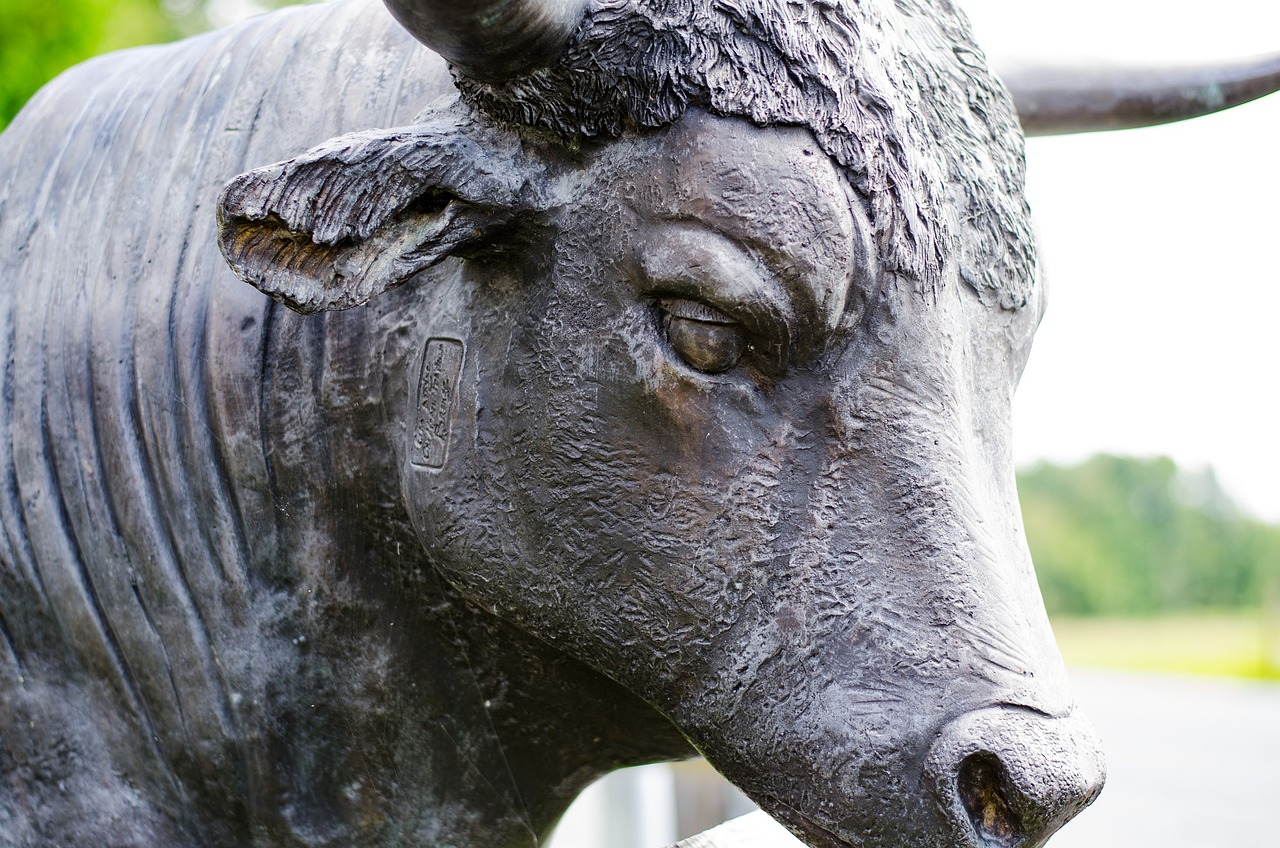
Tolerance is a core American value that encourages respect for differences and the celebration of individual uniqueness. The nation’s commitment to freedom of religion, expression, and assembly has fostered an environment where people from diverse backgrounds can coexist and thrive.
Tolerance: The Pillar of American Pluralism
At the heart of the United States’ cultural fabric lies the fundamental value of tolerance—an enduring principle that champions the respect for differences and celebrates the rich tapestry of individual uniqueness. This value is not just a passive acceptance of diversity; it’s an active commitment to embracing the multifaceted identities that constitute the American mosaic. America’s unwavering dedication to freedom of religion, expression, and assembly has not only shaped its national identity but has also cultivated an environment where individuals from diverse backgrounds can not only coexist but also flourish.
Respect for Individual Identity:
Religious Freedom: Tolerance begins with the guarantee of religious freedom. It means that every individual has the right to practice their faith, or lack thereof, without fear of persecution. America has always been a haven for those seeking refuge from religious oppression, promoting a diverse spiritual landscape.
Freedom of Expression: The freedom of expression is the lifeblood of tolerance. It permits individuals to voice their opinions, no matter how diverse or dissenting, in an atmosphere of open dialogue. This vibrant exchange of ideas enriches the nation’s intellectual and cultural discourse.
Fostering Inclusivity:
Cultural Kaleidoscope: Tolerance is the reason America can proudly boast of being a cultural kaleidoscope. It allows for the celebration of a myriad of traditions, languages, cuisines, and art forms, transforming the nation into a global cultural hub.
Celebrating Uniqueness: It encourages the celebration of individual uniqueness. Whether it’s in the workplace, educational institutions, or the community, tolerance empowers individuals to embrace their distinct identities, contributing to a more inclusive and harmonious society.
The Power of Coexistence:
Intersectionality: Tolerance recognizes the interconnectedness of various forms of diversity, from race and religion to gender and sexuality. It acknowledges that individuals possess multiple identities, and these identities enrich the collective human experience.
Peaceful Assembly: The right to peacefully assemble and protest is a testament to America’s commitment to tolerance. It provides a platform for individuals to collectively advocate for change, amplifying diverse voices and promoting social progress.
Championing Human Rights:
Global Influence: America’s dedication to tolerance extends its influence globally. It champions human rights and encourages other nations to embrace the principles of diversity, respect, and inclusivity.
Immigrant Nation: Throughout its history, the United States has been a refuge for immigrants seeking a better life. Tolerance is what has made this nation a beacon of hope, drawing individuals from every corner of the world in search of a brighter future.
In conclusion, tolerance is not just a value; it’s a guiding principle that has shaped the United States into a land of opportunities, diversity, and coexistence. It fosters an environment where individuals can not only embrace their own uniqueness but also learn from the richness of others’ experiences. Tolerance is the cornerstone of American pluralism, a value that reminds us that our differences are not divisions but threads that weave the intricate tapestry of a united and harmonious nation.
Should you desire more in-depth information, it’s available for your perusal on this page: ADOPTING CONSENSUS RESOLUTION, GENERAL ASSEMBLY …

The Civil Rights Movement of the 20th century was a turning point in American history, pushing for racial equality and equal rights. While progress has been made, there is an ongoing commitment to inclusivity and dismantling systemic discrimination in all its forms.
The Civil Rights Movement of the 20th century stands as an indelible testament to the power of collective action, determination, and unwavering commitment to justice. It was a transformative era that reshaped not only American society but also the global conversation about human rights and equality.
Historic Achievements: The accomplishments of the Civil Rights Movement are historic and enduring. The movement led to monumental legislative changes, including the Civil Rights Act of 1964 and the Voting Rights Act of 1965. These landmark laws outlawed racial segregation, discrimination, and voter suppression, setting a new legal standard for equality.
Leadership and Resilience: The movement was led by remarkable figures like Martin Luther King Jr., Rosa Parks, Malcolm X, and countless others who displayed extraordinary courage and resilience. Their moral clarity and unwavering dedication to nonviolent protest resonated with millions, both in the United States and around the world.
Inclusivity and Intersectionality: The Civil Rights Movement was not limited to a single issue; it embraced the broader concept of human rights. It underscored the importance of inclusivity and intersectionality, recognizing that discrimination is not limited to race but also encompasses gender, class, and other factors. This expansive perspective continues to inform contemporary social justice movements.
Inspiration for Global Movements: The impact of the Civil Rights Movement reverberated far beyond American borders. It inspired movements for civil rights and social justice in other countries, including the anti-apartheid struggle in South Africa and the global fight against racial discrimination.
Ongoing Struggle: While significant progress has been made since the 1960s, the struggle for racial equality is far from over. Systemic discrimination persists in many forms, from disparities in education and criminal justice to economic inequality. Contemporary movements like Black Lives Matter demonstrate that the fight for justice and inclusivity remains urgent and relevant.
Educational Legacy: The Civil Rights Movement left an indelible mark on educational institutions. It emphasized the importance of teaching about the history of civil rights and social justice. Today, educational programs and curricula continue to highlight the achievements and ongoing challenges of the movement.
Dialogue and Advocacy: The legacy of the Civil Rights Movement encourages ongoing dialogue and advocacy. It serves as a reminder that progress is achieved through dialogue, nonviolent protest, and a collective commitment to change. Movements like these remind us that individuals have the power to make a difference and hold institutions accountable.
In essence, the Civil Rights Movement was a pivotal chapter in American history that continues to shape the nation’s values and aspirations. It’s a testament to the enduring human spirit and the capacity for positive change, serving as a reminder that the pursuit of equality and justice is an ongoing commitment that transcends generations. The lessons learned from this movement are a guiding light in the ongoing journey toward a more inclusive, equitable, and just society for all.
Should you desire more in-depth information, it’s available for your perusal on this page: Five reasons why you should hire Third Culture Kids

Immigrants have made immense contributions to American society. From Nobel laureates and tech entrepreneurs to acclaimed artists and writers, immigrants have left an indelible mark on every facet of American life. Their stories of perseverance and success continue to inspire.
The impact of immigrants on American society is a testament to the power of diversity and the resilience of the human spirit. Their contributions, spanning various fields and disciplines, have enriched the cultural, economic, and intellectual tapestry of the United States. Let’s explore in greater detail how immigrants have not only left an indelible mark but also continue to inspire and shape the nation’s future:
Cultural Enrichment: Immigrants have brought with them a wealth of diverse cultures, traditions, and perspectives. This cultural mosaic has enhanced American society, leading to a vibrant blend of culinary traditions, art forms, music genres, and languages that contribute to the nation’s cultural richness.
Economic Prosperity: Immigrant entrepreneurs have played a pivotal role in driving economic growth in the United States. Many iconic American companies, including Google, Tesla, and Apple, were founded or co-founded by immigrants who have not only created jobs but also revolutionized industries.
Innovation and Scientific Advancements: Immigrant scientists and researchers have significantly contributed to advancements in science, technology, medicine, and engineering. Nobel laureates and leading experts in various fields have hailed from immigrant backgrounds, pushing the boundaries of human knowledge and discovery.
Academic Excellence: Immigrant students and scholars have excelled in American universities and academic institutions. Their contributions to research, education, and intellectual discourse have elevated the quality of education and bolstered the nation’s standing in the global academic arena.
The Arts and Humanities: Immigrant artists, writers, and performers have left an indelible mark on American culture. From literary giants like Vladimir Nabokov and Isabel Allende to celebrated actors like Meryl Streep and Lupita Nyong’o, their creative expressions have transcended borders and resonated with audiences worldwide.
Social Activism and Advocacy: Many immigrants have been at the forefront of social justice movements, advocating for civil rights, equality, and justice. Their dedication to these causes has contributed to positive societal changes and inspired countless individuals to join the fight for a more equitable society.
Entrepreneurial Spirit: Immigrant entrepreneurs often embody the American Dream, starting from humble beginnings and building successful businesses that create employment opportunities and drive economic growth.
Resilience and Perseverance: The stories of immigrants overcoming adversity, navigating new cultures, and building new lives are a source of inspiration for all. Their resilience and determination in the face of challenges continue to motivate others to pursue their dreams.
Civic Engagement: Immigrants actively engage in civic life, contributing to the democratic fabric of the United States. Their participation in elections, community organizations, and advocacy groups fosters a more inclusive and representative democracy.
Humanitarian Contributions: Many immigrants have made significant humanitarian contributions, from providing aid in times of crisis to championing causes related to global health, education, and human rights.
In summary, immigrants have made profound and enduring contributions to American society across a spectrum of domains. Their stories of perseverance, achievement, and dedication to the betterment of their adopted homeland serve as a testament to the enduring spirit of America as a nation of immigrants. As the United States continues to evolve and embrace its diversity, the legacy of immigrants will remain a source of inspiration and a driving force for progress and innovation in the years to come.
Should you desire more in-depth information, it’s available for your perusal on this page: BACKGROUND PAPER RACIAL AND ETHNIC DISPARITIES IN …
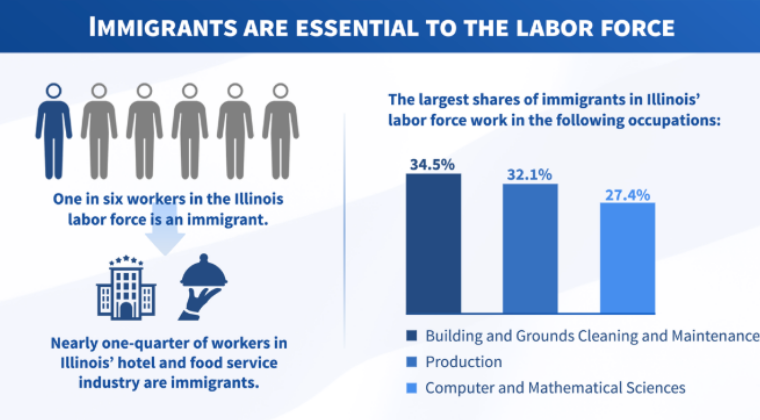
Diversity brings a wealth of global perspectives to American culture. This international outlook is an asset in an increasingly interconnected world, allowing the nation to engage with global issues, trade, and diplomacy more effectively.
Diversity is indeed one of America’s greatest strengths, and it goes beyond enriching the nation’s culture—it also plays a pivotal role in shaping the country’s international engagement and influence in our interconnected world. The United States’ diverse population brings a multitude of global perspectives to the forefront, serving as a valuable asset in navigating the complex landscape of international relations, trade, and diplomacy. Here’s how diversity contributes to the nation’s ability to engage with global issues effectively:
Cultural Sensitivity: A diverse population naturally fosters cultural sensitivity and awareness. Americans from various backgrounds often possess firsthand knowledge of different customs, languages, and traditions. This cultural literacy is indispensable when engaging with people from diverse nations, as it helps build bridges of understanding and facilitates effective communication in diplomatic and trade negotiations.
Global Talent Pool: The diversity within the United States attracts talent from around the world. Foreign-born individuals who choose to study, work, or reside in the U.S. contribute their expertise and unique insights to various industries and sectors. This influx of global talent bolsters the nation’s economic competitiveness and innovation, strengthening its position on the world stage.
Diplomatic Influence: In international diplomacy, diverse representation is crucial. When American diplomats and representatives reflect the diversity of the nation, it sends a powerful message about inclusivity and openness. It also helps establish rapport with foreign counterparts and fosters a climate of trust, making diplomatic negotiations more fruitful.
Trade and Economic Relationships: Diversity enhances the United States’ trade and economic relationships with other nations. The nation’s multicultural population can provide valuable market insights and facilitate trade connections, helping American businesses expand their global reach and navigate foreign markets with greater ease.
Global Problem Solving: Many of the world’s most pressing challenges, such as climate change, public health crises, and security threats, are global in nature and require international cooperation. A diverse American population brings a variety of perspectives and problem-solving approaches to these complex issues, fostering innovative solutions and promoting effective global collaboration.
Soft Power and Influence: America’s diversity serves as a form of soft power, making the nation more attractive to the global community. The United States is seen as a place where people of diverse backgrounds can thrive and contribute to society, reinforcing its positive image on the international stage and attracting goodwill from other nations.
In essence, diversity within the United States is not just a domestic asset; it’s a strategic advantage on the global stage. It equips the nation with the cultural intelligence, diplomatic finesse, and economic vitality needed to engage with the world effectively. As the world becomes increasingly interconnected, the ability to tap into a wealth of global perspectives positions the United States as a dynamic and influential player in addressing global challenges, fostering international cooperation, and promoting a more inclusive and prosperous world.
If you’d like to dive deeper into this subject, there’s more to discover on this page: Individual Differences in Pain: Understanding the Mosaic that Makes …

Tolerance is not merely a passive acceptance of differences but an active commitment to understanding, empathy, and unity. It is evident in:
Tolerance is not merely a passive acceptance of differences but an active commitment to understanding, empathy, and unity. It is evident in various aspects of our lives, permeating our interactions and shaping our society. Here are some ways in which tolerance manifests itself:
Cultural Exchange and Appreciation: Tolerance is visible in our willingness to explore and appreciate cultures different from our own. It’s about enjoying diverse cuisines, learning about customs, and celebrating various traditions. This active engagement fosters cultural harmony and a sense of global togetherness.
Interfaith Dialogue: Tolerance thrives in the dialogue between different religious beliefs. It’s not just about coexistence but engaging in conversations that promote religious understanding and respect. This helps dispel misconceptions and stereotypes while strengthening the bonds of a pluralistic society.
Inclusive Education: Tolerance is embodied in inclusive education systems that embrace students with diverse backgrounds, abilities, and learning styles. It’s not only about accommodating differences but actively creating an environment where every individual can thrive, fostering a generation that values diversity.
Social Justice: Tolerance is evident in the fight for social justice. It involves acknowledging historical injustices, advocating for equality, and working towards a society where everyone has equal opportunities and protection under the law.
Political Discourse: Tolerance is reflected in respectful and constructive political discourse. It’s not about silencing opposing views but actively listening and engaging in meaningful debates to find common ground and reach compromise for the betterment of society.
Community Engagement: Tolerance is present in our communities when we actively engage in volunteer work, support local initiatives, and build bridges with neighbors from different backgrounds. This engagement helps create stronger, more harmonious communities.
Media and Entertainment: Tolerance is portrayed in the media and entertainment industry by showcasing diverse characters and stories. It’s about representing various perspectives and backgrounds to foster empathy and understanding among audiences.
International Relations: Tolerance is exemplified in diplomacy and international relations. It involves nations working together, respecting each other’s sovereignty, and finding peaceful resolutions to conflicts through dialogue rather than aggression.
Environmental Stewardship: Tolerance extends to our environment when we actively work towards preserving the planet for future generations. It means respecting the diverse ecosystems and recognizing our responsibility to protect them.
Personal Relationships: Tolerance is found in our personal lives through our interactions with friends, family, and acquaintances. It’s about being open to different viewpoints, forgiving mistakes, and nurturing relationships built on understanding and empathy.
In summary, tolerance is not a passive concept but an active force that shapes our society for the better. It is expressed through our actions, decisions, and choices, ultimately fostering a world where differences are not just accepted but celebrated, and unity is achieved through genuine understanding and empathy.
Don’t stop here; you can continue your exploration by following this link for more details: Tolerance, Secularism, Multiculturalism: Charlie Hebdo and Maus

Across the nation, cultural festivals celebrate diversity, showcasing music, dance, cuisine, and traditions from various countries. These events foster cross-cultural understanding and appreciation.
Cultural festivals stand as vibrant celebrations of diversity, bringing communities together in a harmonious blend of music, dance, cuisine, and traditions from around the world. These events are not only showcases of artistic and culinary prowess but also serve as powerful platforms for fostering cross-cultural understanding and appreciation. Let’s delve deeper into the significance of cultural festivals:
Promoting Cross-Cultural Exchange: Cultural festivals are living testaments to the richness of human heritage. They offer a unique opportunity for people of all backgrounds to engage with diverse cultural expressions. Attendees can immerse themselves in the rhythms of different music genres, witness traditional dances, and savor the flavors of international cuisines. This direct engagement fosters a deeper appreciation for the beauty of cultural diversity.
Breaking Down Stereotypes: In a world where stereotypes and prejudices can persist, cultural festivals challenge these biases head-on. When individuals interact with representatives from various cultures, they often find that their preconceived notions are unfounded. This personal connection encourages open-mindedness and dismantles stereotypes, paving the way for greater empathy and understanding.
Preserving Cultural Heritage: Cultural festivals play a vital role in preserving and passing on cultural traditions from one generation to the next. They provide a platform for elders to share their knowledge and skills with younger members of their community, ensuring that heritage is not lost but perpetuated.
Fostering Community Bonds: These festivals are not merely spectator events; they are communal experiences. People come together to organize, participate in, and celebrate their shared heritage. This strengthens community bonds, creating a sense of belonging and unity.
Educational Opportunities: Cultural festivals are a rich source of education. Visitors can learn about the history, art, and customs of different cultures through exhibits, demonstrations, and informative presentations. These educational aspects promote a more informed and culturally aware society.
Boosting Tourism: Cultural festivals often draw tourists from near and far. These events showcase a community’s unique character and offerings, benefiting local economies and promoting tourism.
Promoting Peace and Unity: In an increasingly interconnected world, cultural festivals promote peace and unity by emphasizing common human experiences and aspirations. They remind us of our shared humanity and the beauty of our differences.
In conclusion, cultural festivals are far more than just lively gatherings; they are conduits of understanding, acceptance, and celebration. They embody the belief that our differences are what make us unique, and our shared experiences are what connect us as a global community. By fostering cross-cultural understanding and appreciation, these festivals contribute to the creation of a more harmonious and tolerant world where diversity is celebrated and cherished.
Don’t stop here; you can continue your exploration by following this link for more details: Chapter 27. Working Together for Racial Justice and Inclusion …
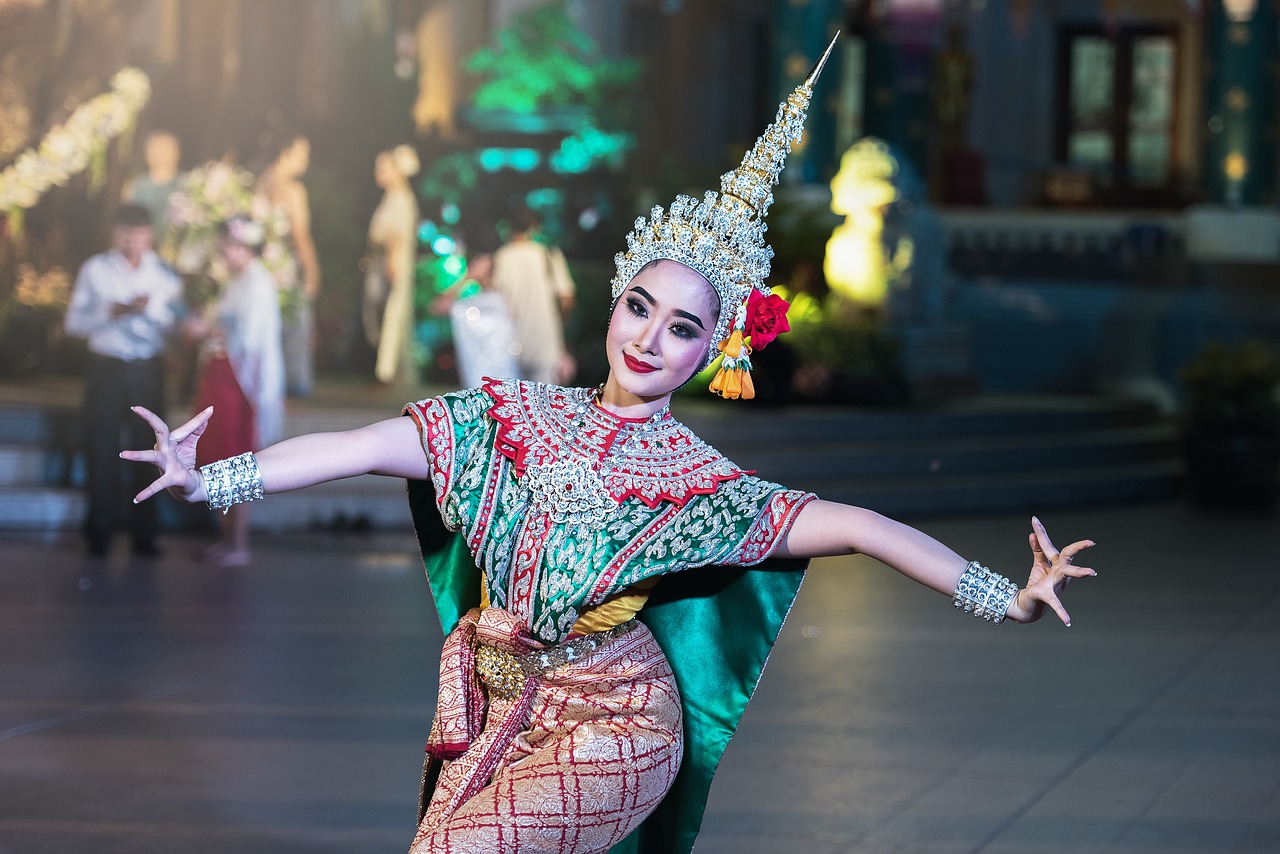
Schools and universities prioritize diversity and inclusion, offering courses that explore different cultures, histories, and worldviews. This education promotes empathy and prepares students for a globalized world.
Schools and universities prioritize diversity and inclusion, offering courses that explore different cultures, histories, and worldviews. This education promotes empathy and prepares students for a globalized world by fostering a deep understanding of the interconnectedness of our diverse society. By embracing diversity, institutions not only provide students with a broader perspective on the world but also equip them with essential skills for effective communication, collaboration, and problem-solving in an increasingly interconnected and multicultural global landscape.
Furthermore, such an education system encourages students to challenge their preconceived notions and biases, fostering a culture of open-mindedness and tolerance. It equips them with the tools to confront issues of discrimination, inequality, and social injustice, creating a generation of change-makers committed to building a more equitable and inclusive society.
In addition to academic benefits, a focus on diversity and inclusion in education prepares students for the workforce of the future, where diversity is valued as a driving force behind innovation and creativity. Graduates with exposure to diverse perspectives are more adaptable, culturally competent, and better equipped to thrive in a globalized job market.
In essence, the prioritization of diversity and inclusion in educational institutions not only enriches the intellectual experiences of students but also contributes to the development of empathetic, socially conscious, and globally aware individuals who are ready to tackle the challenges and opportunities of our ever-evolving world.
You can also read more about this here: Chapter 27. Working Together for Racial Justice and Inclusion …
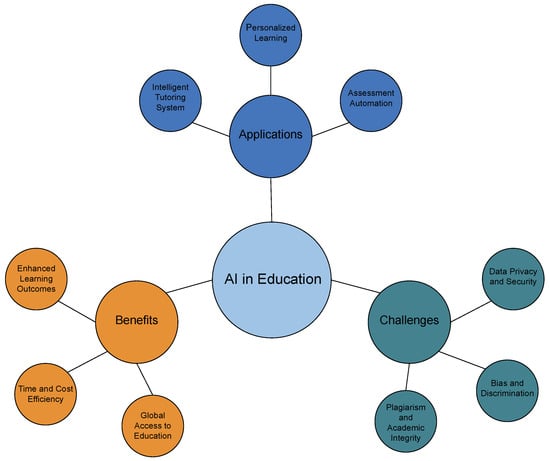
Movements for social justice, such as LGBTQ+ rights and gender equality, demonstrate the power of tolerance in effecting positive change. These movements challenge societal norms and promote inclusivity.
Movements for social justice, such as LGBTQ+ rights and gender equality, demonstrate the power of tolerance in effecting positive change. These movements challenge societal norms and promote inclusivity by fostering conversations that not only break down stereotypes but also encourage empathy and understanding. By embracing diversity and challenging discrimination, they pave the way for a more equitable and harmonious society where everyone’s rights and identities are respected and celebrated.
You can also read more about this here: Cultural Diversity: Definition & Meaning | Purdue Global
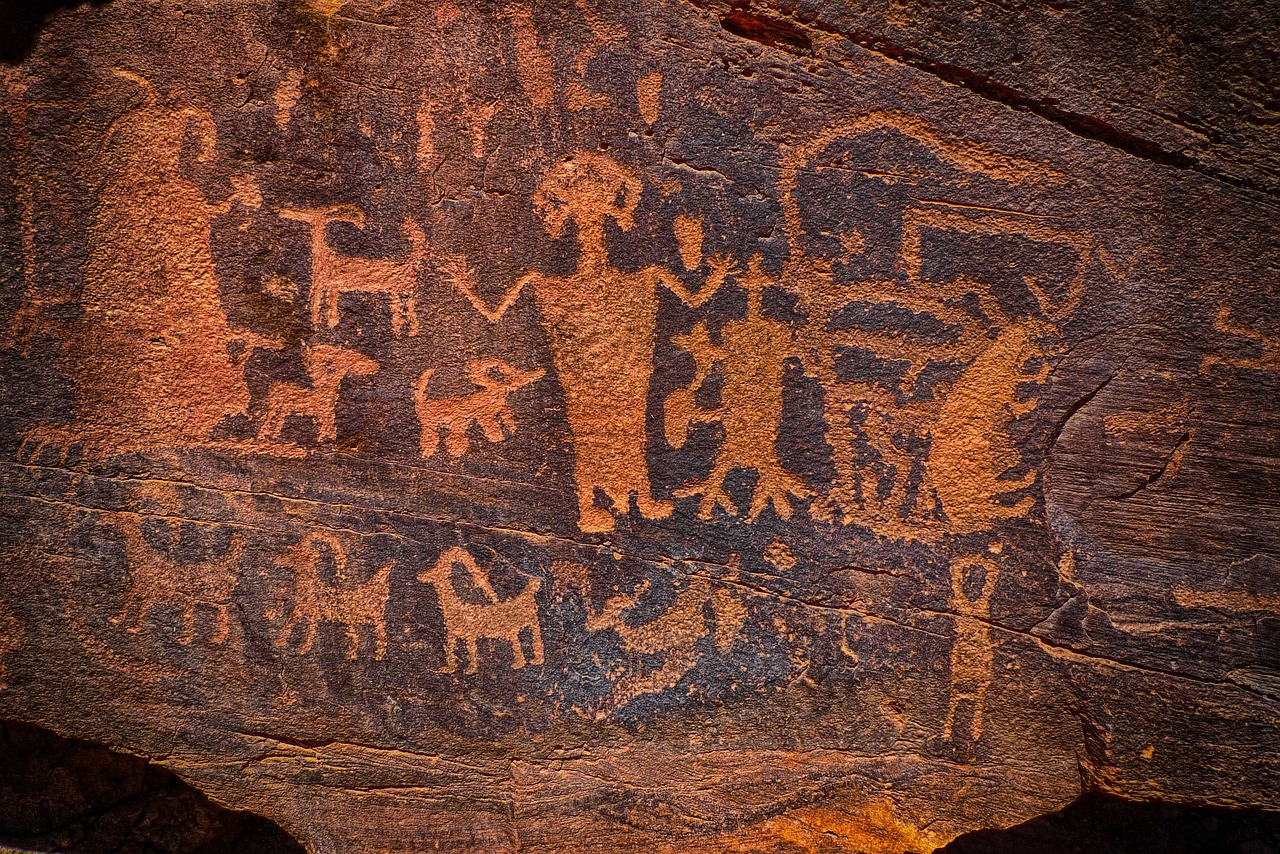
Grassroots organizations and community initiatives bring people from diverse backgrounds together for common causes, such as poverty alleviation, disaster relief, and environmental conservation.
Grassroots organizations and community initiatives serve as the bedrock of positive change, uniting individuals from diverse backgrounds in pursuit of shared objectives. These endeavors not only foster a sense of unity but also exemplify the power of collective action in addressing critical issues.
One of the remarkable aspects of grassroots efforts is their ability to mobilize people across various socio-economic, cultural, and geographical boundaries. When people come together under the banner of these organizations, they transcend differences to focus on common causes, including poverty alleviation, disaster relief, and environmental conservation.
In the realm of poverty alleviation, grassroots organizations empower marginalized communities by providing essential resources, education, and economic opportunities. By bridging the gap between the privileged and the disadvantaged, they strive to create a more equitable society.
In times of disaster, the swift response and resilience of grassroots initiatives can be life-saving. These groups often have an intimate understanding of local needs and vulnerabilities, allowing them to provide immediate relief and support to affected individuals and communities.
Moreover, grassroots efforts play a vital role in environmental conservation. They raise awareness about pressing environmental issues and work to protect natural resources and ecosystems. By engaging people from all walks of life, these initiatives promote sustainable practices and advocate for the preservation of our planet for future generations.
In summary, grassroots organizations and community initiatives are catalysts for social change, forging connections among people with diverse backgrounds and inspiring collaborative efforts to address pressing issues. Their impact extends far beyond their immediate goals, serving as a testament to the potential of collective action in building a better, more inclusive, and sustainable world.
If you’d like to dive deeper into this subject, there’s more to discover on this page: Cultural Diversity: Definition & Meaning | Purdue Global

Conclusion
Tolerance and diversity are the cornerstones of American culture, weaving together a vibrant tapestry of traditions, beliefs, and backgrounds. This multicultural mosaic is not without its challenges, but it stands as a testament to the nation’s resilience and adaptability. In a world that grows ever more interconnected, the American commitment to tolerance and diversity serves as an inspiring example for the global community, demonstrating the profound strength that arises when people from all walks of life come together in unity and understanding.
Tolerance and diversity are the cornerstones of American culture, weaving together a vibrant tapestry of traditions, beliefs, and backgrounds. This multicultural mosaic is not without its challenges, but it stands as a testament to the nation’s resilience and adaptability. In a world that grows ever more interconnected, the American commitment to tolerance and diversity serves as an inspiring example for the global community, demonstrating the profound strength that arises when people from all walks of life come together in unity and understanding.
At the heart of this enduring commitment is the principle of freedom – a foundational value upon which the United States was built. The freedom to practice one’s religion, express one’s opinions, and pursue one’s dreams has attracted people from every corner of the globe to America’s shores. This freedom has allowed diverse cultures to flourish, enriching the nation’s social fabric and fostering an environment where individuals can celebrate their heritage while forging connections with others.
The United States is a microcosm of the world, and its approach to tolerance and diversity is reflected in its policies, institutions, and social norms. Its educational institutions, for instance, welcome students from around the world, fostering an environment where global perspectives are cherished. This not only contributes to the nation’s intellectual vibrancy but also encourages young minds to embrace the beauty of cultural exchange.
In business, American companies benefit from a diverse workforce that brings a range of talents, perspectives, and problem-solving approaches to the table. This diversity-driven innovation has allowed the U.S. to maintain its status as a global economic powerhouse. Inclusivity is seen as a competitive advantage, and companies increasingly recognize that diverse teams are more creative and better equipped to tackle complex challenges.
Furthermore, the American commitment to tolerance and diversity extends to its foreign policy, as it engages with the world in a spirit of cooperation and diplomacy. Through initiatives like foreign aid and international partnerships, the U.S. works to promote human rights, democracy, and tolerance worldwide. It recognizes that global challenges, such as climate change, pandemics, and terrorism, require collaborative solutions that transcend borders and cultures.
While the American model of tolerance and diversity is inspiring, it is not without its challenges. Issues of inequality, discrimination, and social division persist within the country. However, these challenges are met head-on by a society that continually strives for progress. Grassroots movements, legal reforms, and public dialogue are all part of the ongoing effort to build a more just and inclusive nation.
In a rapidly changing world, where technology has made the globe more interconnected than ever before, the American example of tolerance and diversity stands as a beacon of hope and a reminder of what humanity can achieve when differences are celebrated rather than feared. It is a living testament to the idea that unity in diversity is not just an aspiration but a tangible reality. As the world looks to address global challenges, the American commitment to tolerance and diversity serves as a guiding light, illuminating the path toward a more inclusive and harmonious global community.
Additionally, you can find further information on this topic by visiting this page: Individual Differences in Pain: Understanding the Mosaic that Makes …
More links
To expand your knowledge on this subject, make sure to read on at this location: 6.1 Political Culture – American Government and Politics in the …
